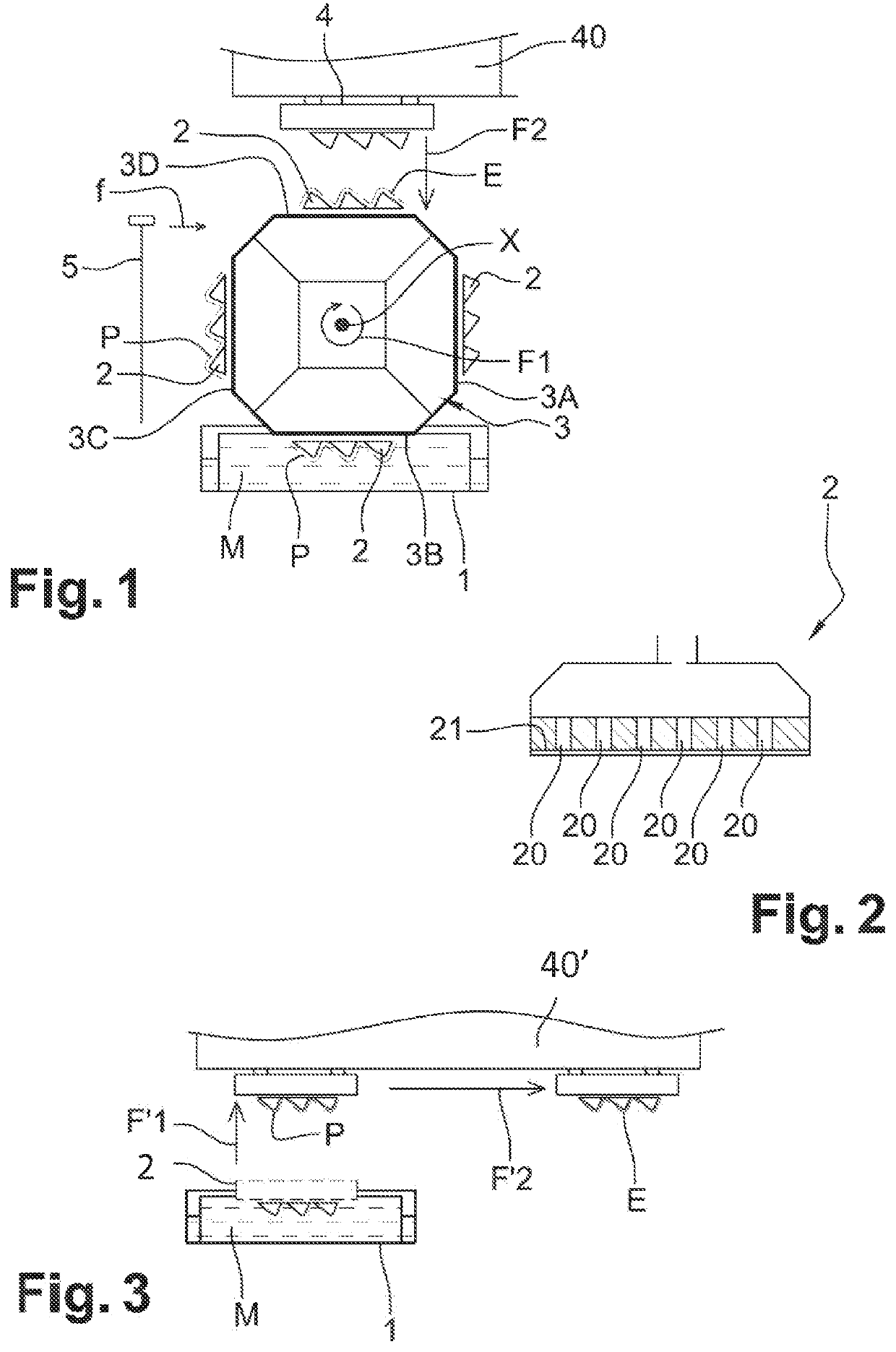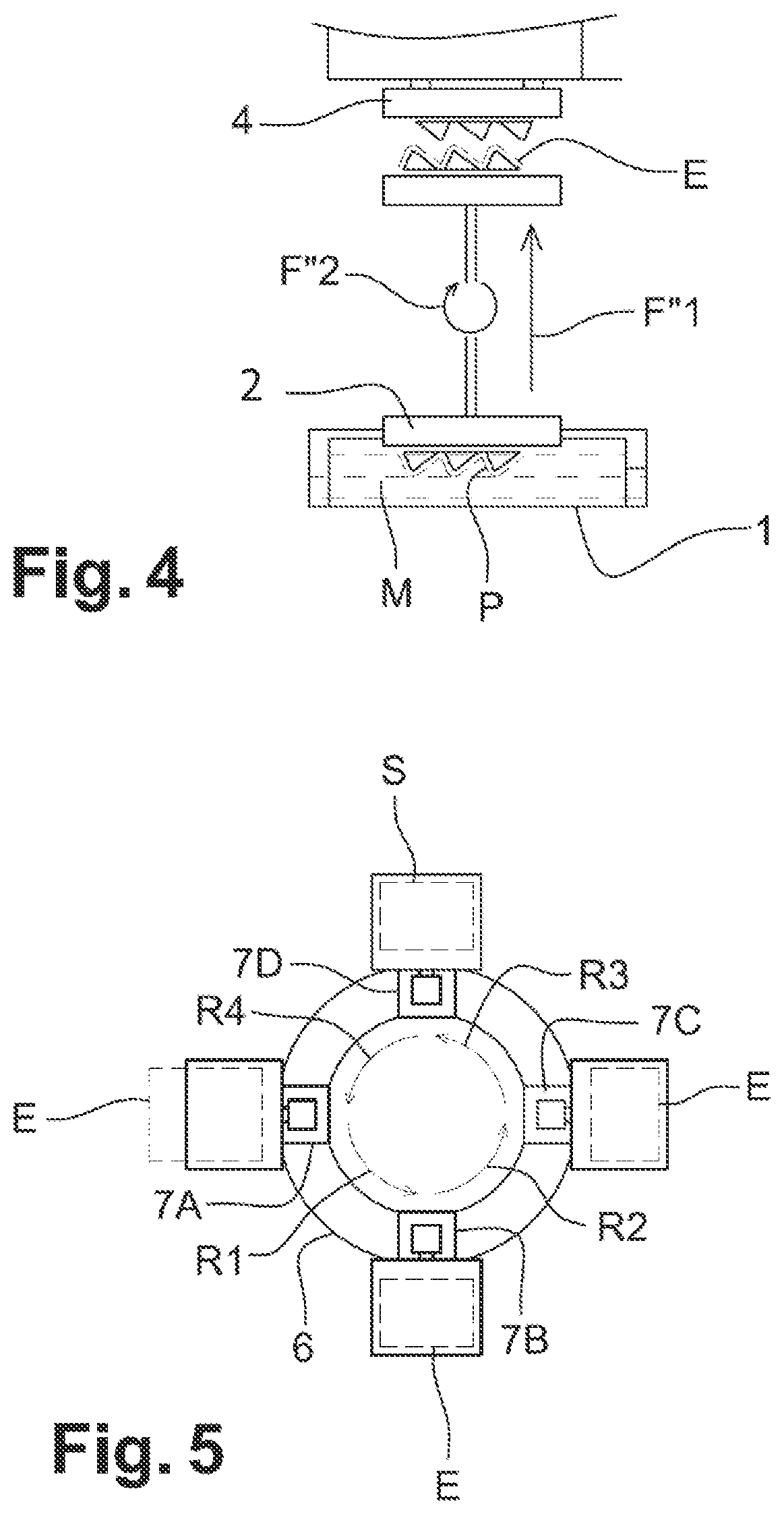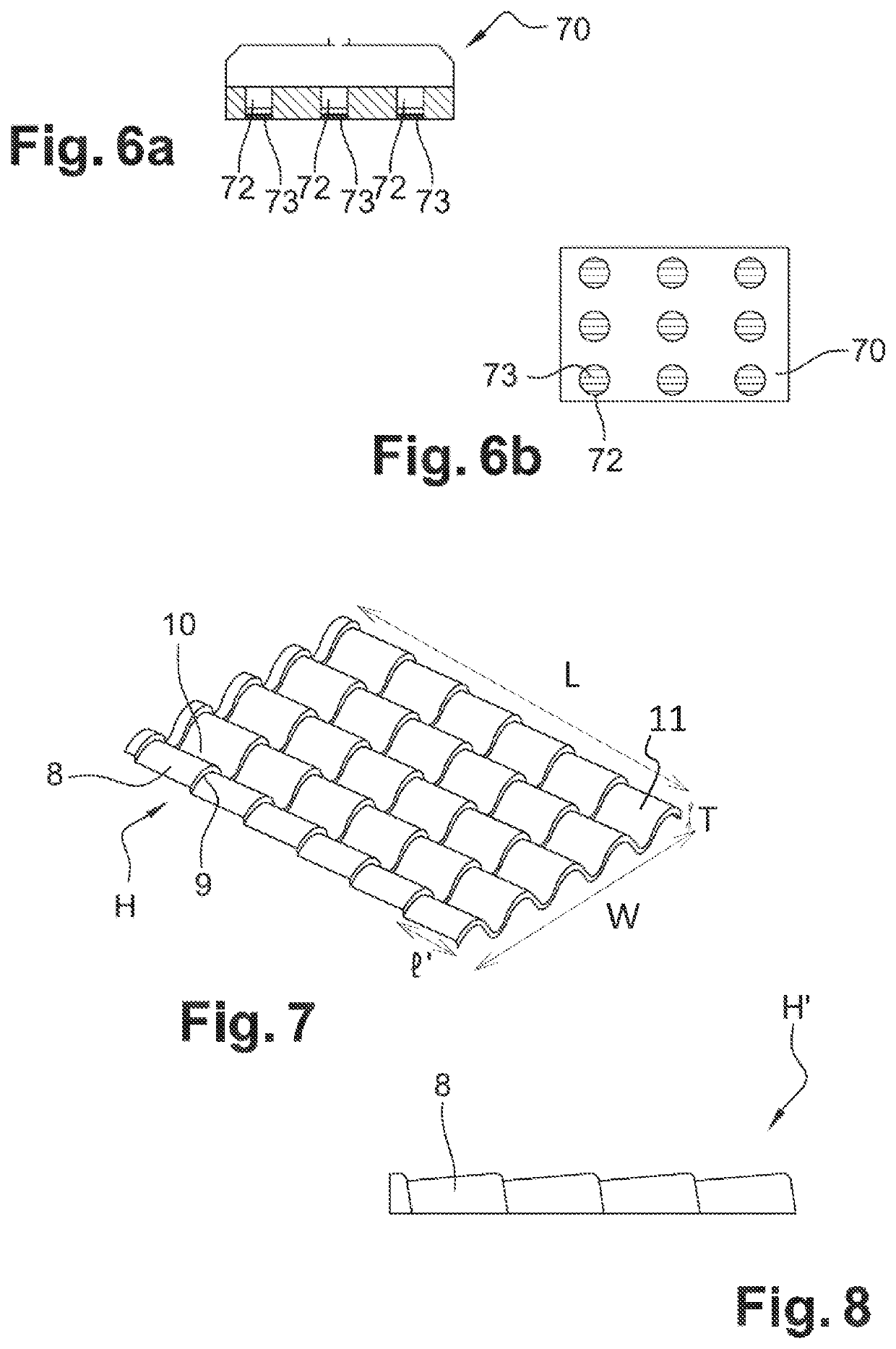Method for producing a hydrophobic element and use thereof
a technology of hydrophobic elements and hydrophobic coatings, which is applied in the field of manufacturing hydrophobic coating elements, can solve the problems of not being able to meet the requirements of the surface it covers, unable to preserve the initial shape in the face of time and humidity, and unable to meet the requirements of the required requirements at the same time. to achieve the effect of ensuring the impermeability of the surface it covers
- Summary
- Abstract
- Description
- Claims
- Application Information
AI Technical Summary
Benefits of technology
Problems solved by technology
Method used
Image
Examples
second embodiment
[0198]In a second embodiment, illustrated in FIG. 3, a mould 2 is immersed, under vacuum, in the tank 1 comprising the mixture M, then the mould 2, comprising a portion P of the mixture M, carries out a movement of vertical translation according to the arrow F′1 in order to remove the mould 2 from the tank 1.
[0199]Then, the mould 2 carries out a movement of horizontal translation in the direction of a belt conveyor (not shown), according to the arrow F′2, until a moulded element E is obtained.
[0200]The moulded element E is then deposited on the belt conveyor (not shown), after creation of an overpressure (stoppage of the vacuum) in the mould 2.
[0201]The mould 2 is suspended from a plate 40′, by elements allowing its vertical and horizontal movement.
[0202]The belt conveyor allows to move the moulded element E in the direction of a pressing system 6 (FIG. 5).
third embodiment
[0203]In a third embodiment illustrated in FIG. 4, a mould 2 is immersed, under vacuum, in the tank 1 comprising the mixture M, then the mould 2 carries out a movement of vertical translation according to the arrow F″1 and a movement of rotation of 180° according to the arrow F″2, in such a way as to present the moulded element E opposite a transfer counter-mould 4 as described with regard to FIG. 1.
first embodiment
[0204]The transfer of the moulded element E from the forming mould 2 to the transfer counter-mould 4 takes place in the same way as above, in the
[0205]FIG. 5 shows that the moulded element E is transferred to a carrousel pressing system 6.
[0206]The carrousel pressing system 6 comprises four pressing mould 70 (FIGS. 6a, 6b) and counter-mould (not shown) pairs 7A, 7B, 7C, 7D.
[0207]More precisely, the moulded element E is transferred into a first pressing mould and counter-mould pair 7A in which the mould and counter-mould are pressed against one another, under vacuum, the mould and counter-mould being heated to a temperature of between 160 and 280° C.
[0208]The carrousel pressing system 6 then carries out a succession of rotation by 90° in the anti-clockwise direction, arrows R1, R2, R3, R4, in such a way that each pair 7A, 7B, 7C, 7D can receive a moulded element E.
[0209]When the pair 7A has carried out three rotations of 90°, a dried and densified element S is obtained.
[0210]The moul...
PUM
| Property | Measurement | Unit |
|---|---|---|
| thickness | aaaaa | aaaaa |
| size | aaaaa | aaaaa |
| size | aaaaa | aaaaa |
Abstract
Description
Claims
Application Information
 Login to View More
Login to View More - R&D
- Intellectual Property
- Life Sciences
- Materials
- Tech Scout
- Unparalleled Data Quality
- Higher Quality Content
- 60% Fewer Hallucinations
Browse by: Latest US Patents, China's latest patents, Technical Efficacy Thesaurus, Application Domain, Technology Topic, Popular Technical Reports.
© 2025 PatSnap. All rights reserved.Legal|Privacy policy|Modern Slavery Act Transparency Statement|Sitemap|About US| Contact US: help@patsnap.com



